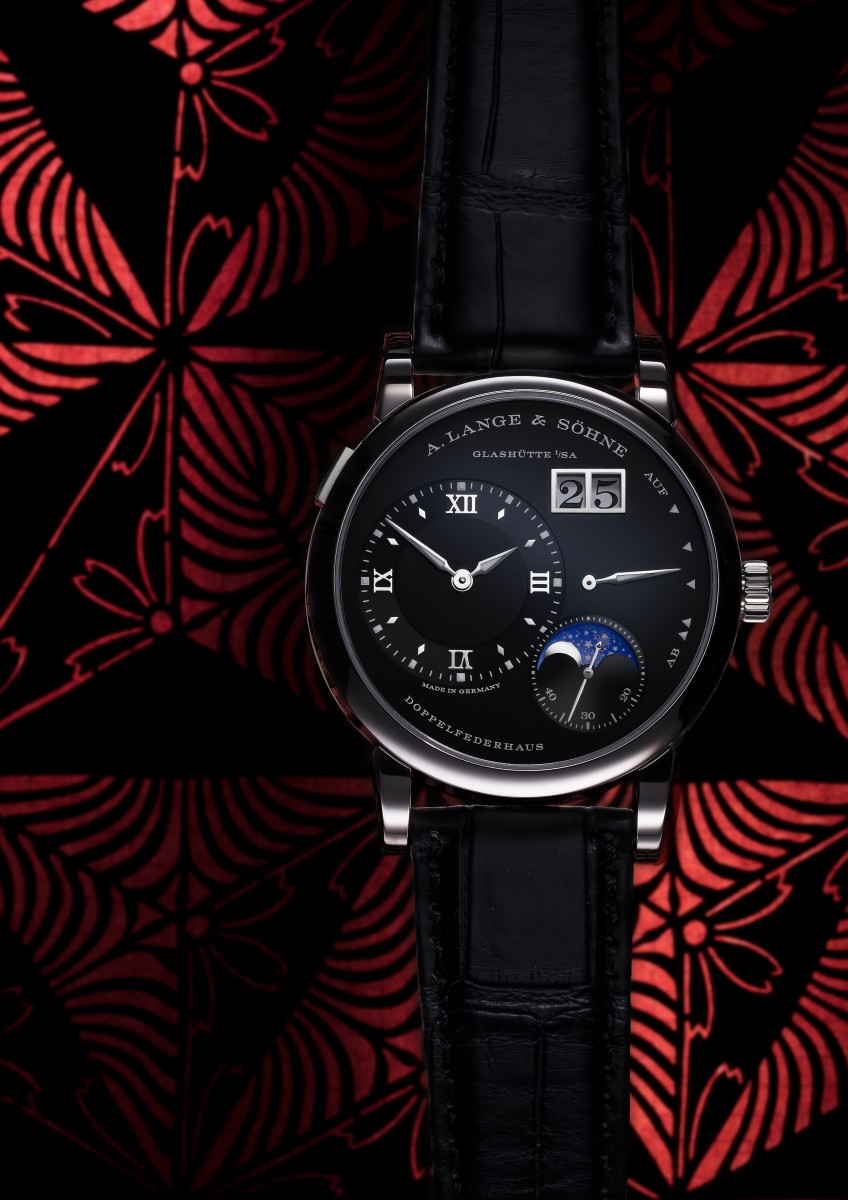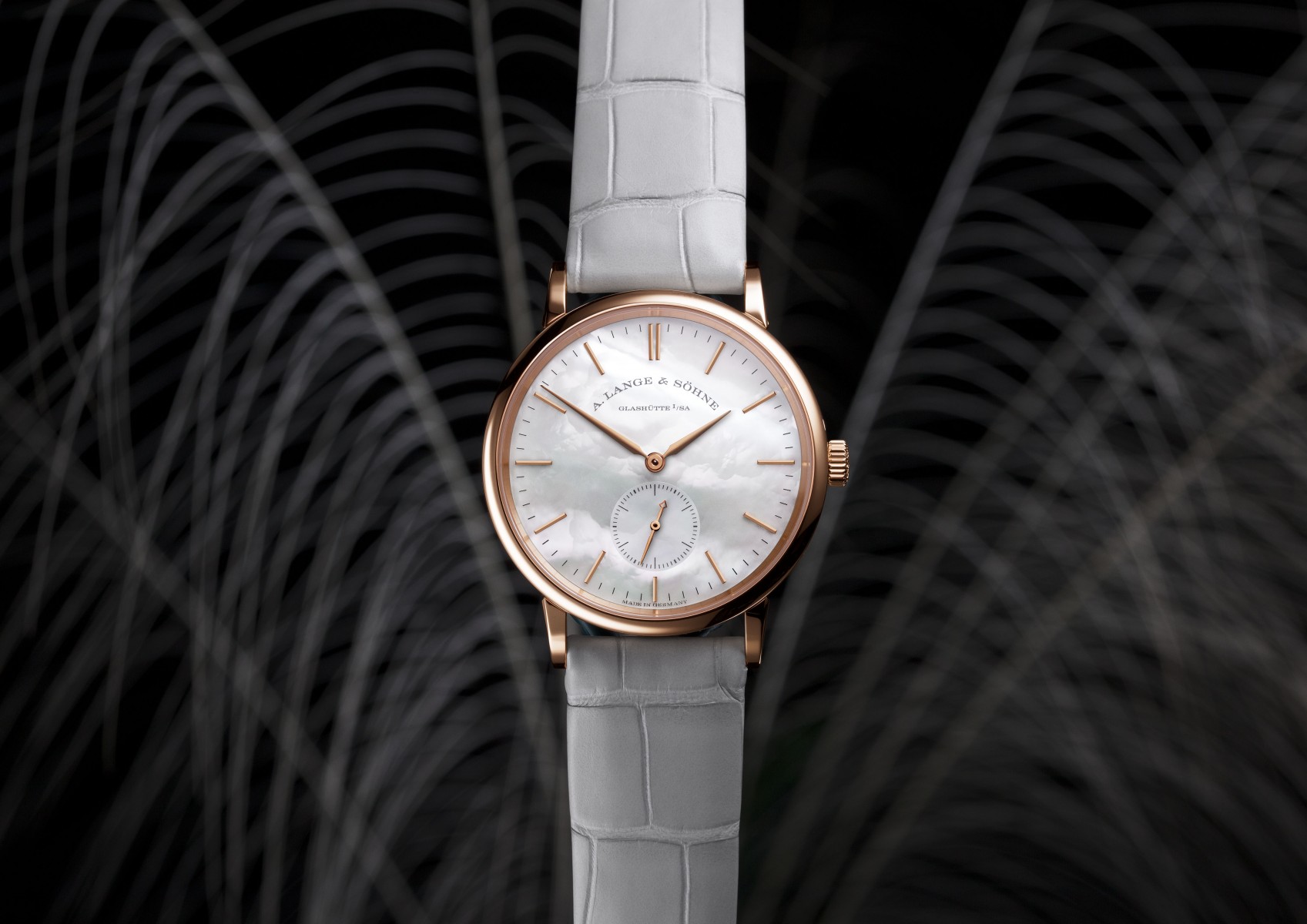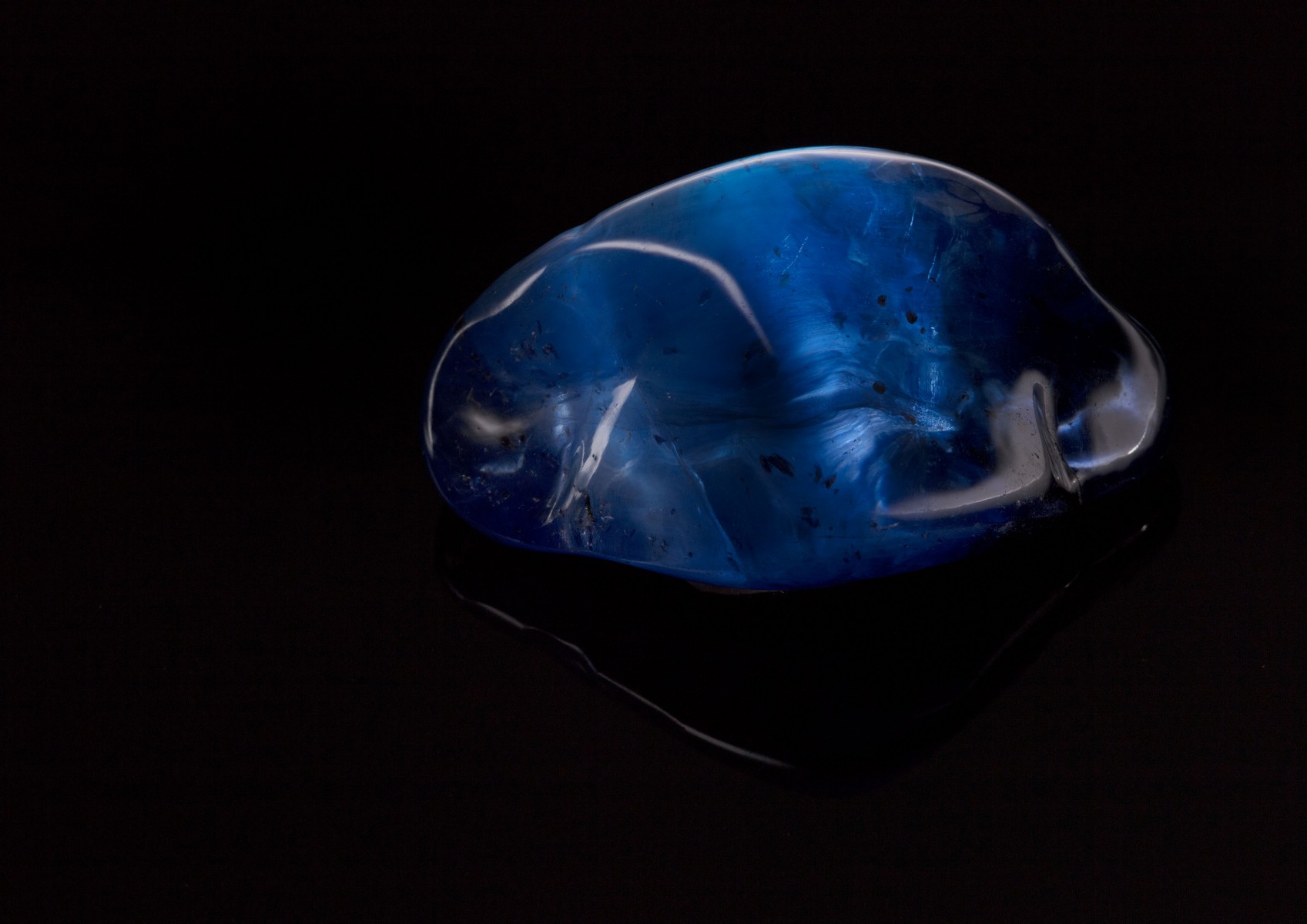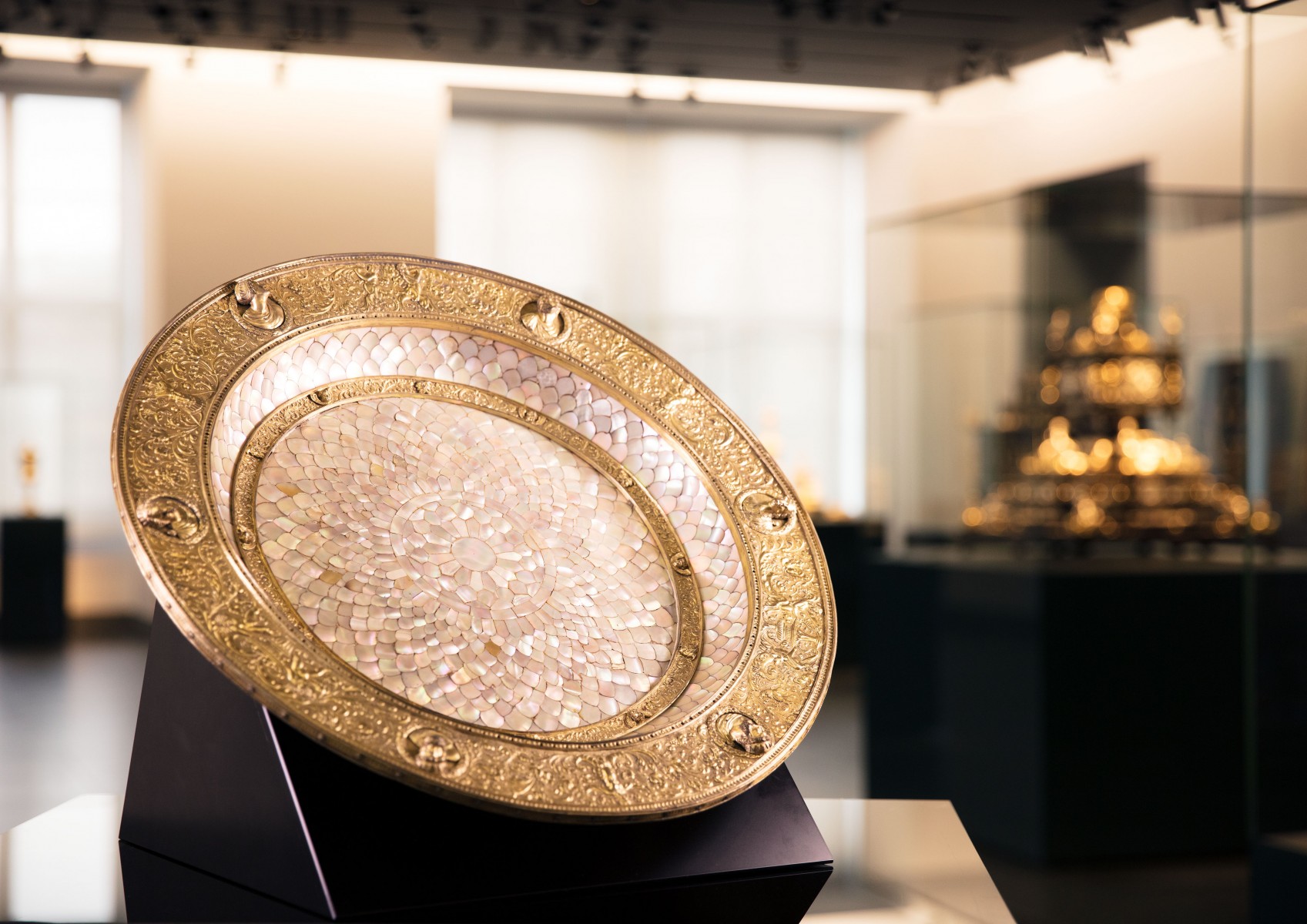Masterpieces in and from Saxony
A. Lange & Söhne debuts join precious creations from all over the world
The Dresden State Art Collections are world famous for their museums that hold a multitude of international works of art in safekeeping. A small selection of exhibits with exciting stories was paired with current A. Lange & Söhne models for a photo shoot.
Anyone interested in a cultural trip around the world should pay a visit to the Dresden State Art Collections that A. Lange & Söhne has been supporting as an official partner since 2006. Their 15 museums harbour important artisanal artefacts from all continents.
Current A. Lange & Söhne models have now entered into a dialogue with hand-picked masterpieces from Italy, Russia, India, China, Japan and Brazil. As different as the origins of these treasures may be, what each and every one of them shares is an exciting background story.
In the context of courtesy, politics and reputation, generous gifts have always been a significant and effective diplomatic instrument. Numerous treasures in the portfolio of the State Art Collections still reflect the royal art of giving. A special story is associated with the sapphire. In 1698, en route on his multi-year voyage across Europe, Russian tsar Peter the Great met Augustus the Strong in Poland, soliciting his assistance in gaining dominance over the Baltic Sea region. He presented his friend, the Elector of Saxony, with the 548-carat fist-sized precious stone as a courtesy gift. Augustus reciprocated with a diamond-set walking stick. A year later, Augustus joined the alliance against Sweden. The extent to which the precious gift contributed to the political success of the mission is not known. Today, the gem with its mesmerising colour is on display in the Green Vault.
The Lange 1 Moon Phase in white gold with a black dial was launched in January 2017. It combines a moon-phase display that is accurate to 122.6 years with a day/night indication. Behind the golden moon, the celestial disc, coupled with the hour wheel, performs a complete revolution every 24 hours. On the disc, the different times of day are represented by varying blue hues caused by interference effects. During the day, it shows a bright sky without stars while at night, it depicts a dark sky with prominently contrasting laser-cut stars. Thus, the moon always orbits against a realistic background that doubles as a day/night indicator when setting the watch.
Its little sister, the Little Lange 1 Moon Phase also showcases the mysterious aura of the moon. Endowed with a new movement, the elegant model features an argenté-coloured, guilloched dial accommodated in a 36.8-millimetre pink-gold case. It is presented with a feather diadem crafted by the Baniwa, an indigenous tribe that lives on the upper Rio Negro in the region between Brazil, Colombia and Venezuela. The magnificent diadem, an exhibit added to the collection of the Dresden Museum of Ethnology in 1966, was probably once used in shamanic dance rituals.
Indian musicologist Raja Sourindro Mohun Tagore had a very special relationship with Dresden. In 1877, he sent three Indian musical instruments to the Saxon court as a gift and in return was awarded the Albert Order. This was followed in 1882 by a second donation of 450 artefacts of Indian culture, including a checkerboard-patterned plate with semi-precious stone intarsias. The court of Saxony always held Indian artisanship in high esteem. Tagore’s generous gift was tied with the request that the artistically crafted objects be publicly displayed. King Albert immediately transferred the collection to the city’s ethnographic museum that had been inaugurated only a few years earlier; there, it constituted the kernel of the South Asia department.
The splendid bowl, densely faced with mother-of-pearl wafers, and a matching carafe found their way from India to Saxony along clandestine routes. Portuguese merchants are said to have first brought them from Gujarat in north-western India to southern Germany. There, the two vessels were fitted with matching plinths, probably around 1540 in Nuremberg, to make them more attractive for the tastes of a German Renaissance nobility. But how this early example of an intercultural art project eventually found its way to Saxony is largely speculative, as is its alleged baptismal use by the House of Wettin. What is certain: the precious ensemble was transferred to the Green Vault when the Dresden “art chamber” was dissolved in 1832.
The mother-of-pearl dial of the new Saxonia scintillates with colour as well. Slender hands and baton hour markers in solid gold emphasise the elegant design, complemented with a white alligator leather strap. It is available in white and pink gold.
The Green Vault in Dresden is world famous as one of Europe’s most opulent treasure chambers. It fulfilled Augustus the Strong’s dream of a baroque fusion of the arts and an expression of lifestyle, wealth and power. This is where the boundless fantasies of collection-addicted monarchs took shape in the form of thousands of luxurious objects in gold, silver, amber, mother of pearl, rock crystal and precious stones. The best artisans of the epoch participated in these orchestrated exhibitions. Famous for his impressive rock crystal vessels, Giovanni Battista Metellino from Milan was one of them. Alongside the Prado in Madrid and the Louvre in Paris, the Green Vault has one of the most significant collections of his ingenious creations. In 1725, Augustus the Strong acquired the shell-shaped ornamental chalice with a dolphin for a price of 200 gold ducats, which at the time was equivalent to the cost of a house.
The Elector of Saxony and later King of Poland also commissioned the Zwinger Palace, one of Dresden’s most awe-inspiring sights. The impressive late baroque edifice is home to one of the most eminent and comprehensive collections of European and Asian porcelain. A roughly one-metre-high vase from China with depictions of dragons ranks among the most precious exhibits. It was created for the court of the Qianlong Emperor who reigned from 1735 to 1796. Accordingly, its artistry is highly elaborate. The main motif is a dragon amid clouds and waves. A traditional symbol of good fortune, it stands for the emperor’s fecundity, vitality and might. Only very few comparable exemplars still exist. They can be admired in the palatial museums in Beijing and Taipei.
The name of the Saxonia Moon Phase introduced in 2016 refers to Saxony, the region reigned by Augustus the Strong as its Elector from 1694 until 1733. It stands out with its lucid design and the compelling combination of two popular complications: a precise moon-phase display and the characteristic Lange outsize date. These two elements dominate the face of a timepiece focused on optimised technology and aesthetic perfection.
For 125 years, the Dresden Kunstgewerbemuseum (Museum of Decorative Arts) has preserved a unique assemblage of Japanese craftsmanship at its Pillnitz Castle site. Here, more than 15,000 templates for traditional Katagami textile printing are kept in 92 cassettes. Thus, Dresden safeguards the world’s largest inventory of Katagami patterns that were originally used mainly for kimono fabrics. Apart from geometric ornaments, it also encompasses abstract, nature-inspired motifs. When the first Katagami prints arrived in Europe in the 19th century, the highly evolved art of Japanese decors exerted a strong influence on Western ornamental trends in art, artisanship and design. Today, the technique of stencilling plays an important role in the graffiti scene. Street art celebrities have revitalised printing with stencils.









